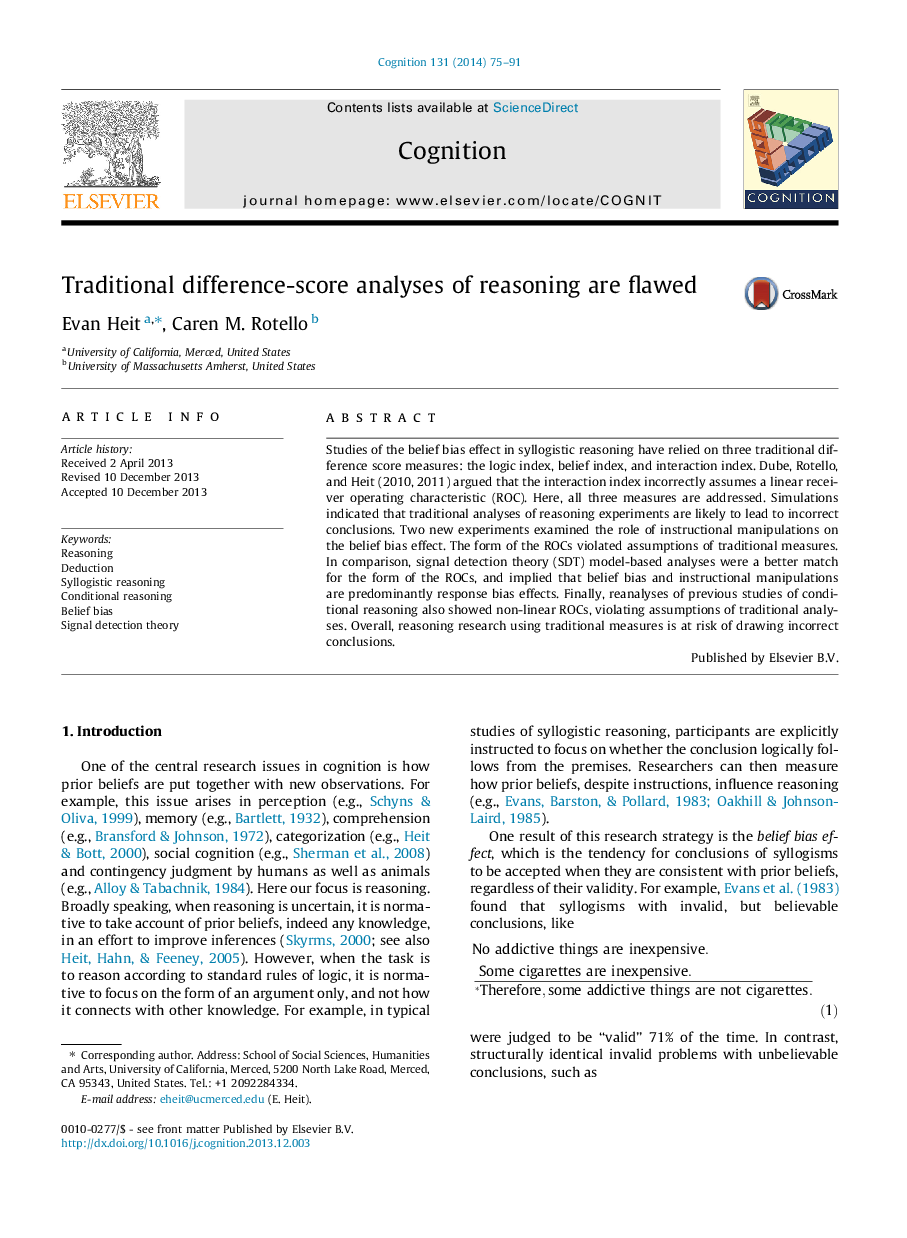| Article ID | Journal | Published Year | Pages | File Type |
|---|---|---|---|---|
| 10457572 | Cognition | 2014 | 17 Pages |
Abstract
Studies of the belief bias effect in syllogistic reasoning have relied on three traditional difference score measures: the logic index, belief index, and interaction index. Dube, Rotello, and Heit (2010, 2011) argued that the interaction index incorrectly assumes a linear receiver operating characteristic (ROC). Here, all three measures are addressed. Simulations indicated that traditional analyses of reasoning experiments are likely to lead to incorrect conclusions. Two new experiments examined the role of instructional manipulations on the belief bias effect. The form of the ROCs violated assumptions of traditional measures. In comparison, signal detection theory (SDT) model-based analyses were a better match for the form of the ROCs, and implied that belief bias and instructional manipulations are predominantly response bias effects. Finally, reanalyses of previous studies of conditional reasoning also showed non-linear ROCs, violating assumptions of traditional analyses. Overall, reasoning research using traditional measures is at risk of drawing incorrect conclusions.
Keywords
Related Topics
Life Sciences
Neuroscience
Cognitive Neuroscience
Authors
Evan Heit, Caren M. Rotello,
